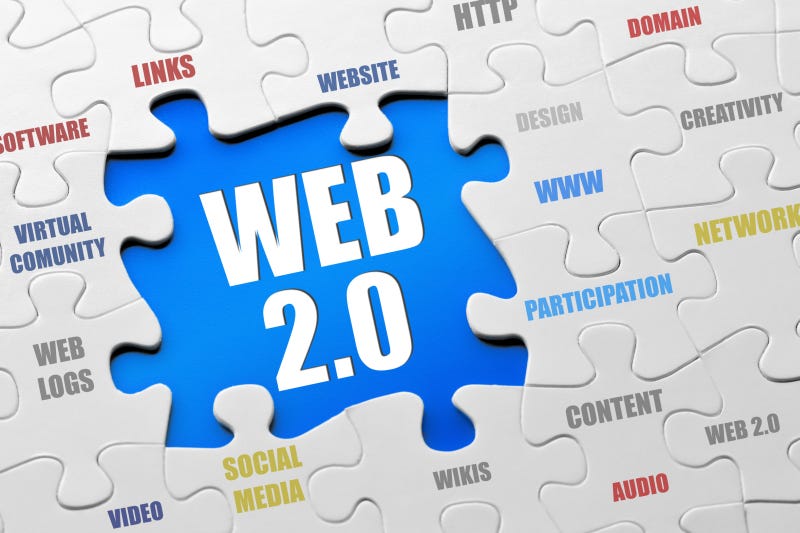The Future of AI Assistants: Ever-Present Helpers or Privacy Nightmares?
Artificial Intelligence (AI) is no longer a concept from science fiction. It's here, and according to Microsoft, it’s about to become even more integrated into our daily lives. Mustafa Suleyman, Microsoft's head of AI, recently gave an exciting—and maybe slightly eerie—glimpse into the future: AI assistants with incredible long-term memory, designed to be ever-present companions in your everyday routine. These AI tools are expected to launch within the next year and are being hailed as the next big step in personal technology.
In an exclusive interview, Suleyman emphasized that these AI assistants could remember conversations, tasks, and issues that you've faced. Essentially, they will become highly personalized digital companions. Picture this: an AI that can organize your meetings, remind you of important projects, and help solve problems based on past interactions. This, Suleyman says, will encourage people to share more of their personal information and spend more time using these tools, creating a new level of human-tech interaction.
A New Age of "Co-Pilot" AI
“We’re moving to a fundamentally new age,” Suleyman explained, “where there will be ever-present, persistent, very capable co-pilot companions in your everyday life.” It sounds futuristic, right? Like something out of a sci-fi movie. But this future is closer than you think. In fact, these types of AI assistants could be in your hands—or ears—within the next year.
However, not everyone is excited about this level of AI integration into daily life. Critics, especially those concerned with privacy, have raised alarms. What happens when your AI assistant has more information about your life than even your closest friends or family? Could this create a whole new set of issues, from data breaches to biased decision-making? And will these tools give you accurate advice, or will they sometimes lead you astray with misinformation?
Privacy Concerns and Trust Issues
One of the most talked-about concerns regarding these ever-present AI assistants is data security. Having an AI that remembers everything sounds useful, but it also raises red flags. Where will all this data go? How can you be sure that the information the AI is storing is secure? Could hackers or unauthorized entities access your most personal details?
Moreover, privacy advocates worry about the extent to which AI tools will observe and interact with your personal data. From emails to private conversations, an AI assistant with long-term memory would need to access a wide range of information to be useful. This might make people uneasy, especially considering the growing number of data breaches in recent years.
But here’s the kicker: Suleyman believes that people’s expectations around privacy have shifted. He notes that many devices already record us in various ways, and most people are okay with it. Think about it—your smartphone, smart TVs, laptops, and even your car's cameras are likely recording data all the time. “Most people love that feature,” Suleyman said, referencing how iPhones now include a feature called Live View, which records video and audio simultaneously when you take a picture. It’s a shift in how we view our privacy, and many have accepted it without much thought.
“Some people turn it off,” he admitted, “but that’s a very distinct shift in the default expectation of what a photo is.” It seems that the question isn't just about whether these AI tools will invade our privacy, but more about whether people will care enough to stop it. If the technology is convenient, it seems many will overlook these concerns.
The Benefits and Challenges of Ever-Present AI
Let’s face it: the idea of having an intelligent assistant always available to help you is tempting. Imagine never forgetting a meeting, always having a personal guide through your daily schedule, and even getting advice tailored specifically to you. AI advocates argue that for these tools to be truly helpful, they must be deeply embedded in our lives. This means having access to all the history and context behind what they’re helping you with.
Take a simple AI diary manager as an example. It can only do its job effectively if it knows your schedule, can edit it, and remembers past events. Without that level of access, its usefulness would be severely limited.
Suleyman believes this is where AI is headed. Rather than being a tool you occasionally interact with, it will become a constant companion, seamlessly integrated into your daily routine. But it’s not just about remembering appointments or sending reminders; these AI assistants will be able to anticipate your needs and proactively offer help. It’s the next level of personal technology, and Microsoft is leading the charge.
Microsoft’s Big Investment in AI
Microsoft is no stranger to AI. The tech giant has invested billions in OpenAI, the creators of ChatGPT, and is emerging as a leader in the race to develop advanced AI technology. You might recognize the name ChatGPT—it’s one of the most popular AI chatbots available today. This tool has become a household name in just a few short years, capable of answering questions, writing essays, and even engaging in complex conversations.
But here’s the interesting part: despite the hype, research shows that people aren't using AI as much as we might expect. A poll from the Reuters Institute in August found that while 29% of people in the UK had used ChatGPT, only 2% used it daily. Suleyman acknowledges that AI tools might not be as universally adopted as smartphones, which are used by nearly 90% of the planet.
“Maybe this is different from the smartphone,” he said. “Maybe 50% will reject [AI tools], but that doesn’t change the fact that AI is the fastest-growing technology in history.” He added that AI’s growth rate has surpassed all previous tech trends, and despite the concerns, it’s here to stay.
Is AI a Bubble Waiting to Burst?
Not everyone is convinced that AI is the future, though. Some critics, including Jim Covello, head of stock research at Goldman Sachs, have suggested that AI could turn out to be a bubble—much like other tech fads that came and went. Think of trends like 3D TVs or Google Glass—these were once hailed as the next big thing, but they fizzled out quickly.
Suleyman, however, is adamant that AI is not a bubble. He believes that the technology has already proven its worth by providing personalized, interactive knowledge at virtually zero cost. In his view, AI is transforming industries, from healthcare to finance, and it’s only going to get bigger.
He even shared a personal story of a woman who used a chatbot called Pi, developed by Suleyman’s team, to set up her own business. This kind of real-world application shows that AI isn’t just a trend—it’s a powerful tool that can change lives.
Microsoft’s AI Assistant: What’s New?
So, what’s Microsoft cooking up in the AI department? The tech giant recently announced several exciting updates to its AI assistant lineup, called CoPilot. These include a new voice function, a daily news digest, and a specialized chatbot called “Think Deeper” for more complex questions.
One of the standout features is CoPilot Vision, a tool designed to assist users while they browse the web using Microsoft’s Edge browser. Vision can observe the content on web pages and offer relevant help, making online activities more efficient. However, Microsoft has taken steps to address privacy concerns—Vision doesn’t record or store data, and users have to manually activate it each time they want to use it.
Despite these efforts, some remain skeptical. Privacy campaigners have already pushed back on certain AI features, like a tool called Recall that Microsoft paused earlier this year. Recall took screenshots every few seconds to help users remember what they were working on, but it faced significant backlash from privacy advocates and even prompted inquiries from the UK’s data watchdog.
Will AI Be a Game Changer or Just Another Tech Tool?
As we look toward the future, one thing is clear: AI is not going anywhere. The question is, how deeply will it integrate into our lives? Will it become an indispensable tool, like the smartphone, or will it remain on the periphery, used only by those who are willing to sacrifice some privacy for convenience?
Suleyman is confident that AI will be a game changer. He believes that the technology will continue to evolve, becoming more personalized and more capable over time. But as with any powerful tool, it’s essential to balance the benefits with the potential risks. Data security, privacy, and the accuracy of AI-generated advice are all issues that need to be addressed as we move into this new age of ever-present AI assistants.
For now, it seems that Microsoft is positioning itself as a leader in the AI revolution, and with billions of dollars invested, it’s clear that the company is betting big on AI’s future. Whether or not the public will fully embrace these ever-present digital companions remains to be seen, but one thing’s for sure: the AI assistant of the future is closer than you think.











.jpeg)
.jpeg)